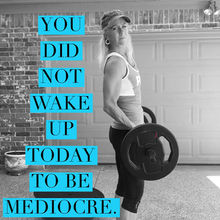How to Improve Your Lactate Threshold Through Active Recovery Intervals
- Mary Timoney Ironman University Certified Coach
- Aug 27, 2023
- 3 min read
Teach your body to get rid of lactic acid more efficiently!
Have you ever hit that all too familiar “brick wall” during a ride or run? This most likely means that your body is accumulating lactate faster than it can get rid of it. When lactate sticks around in your blood, that’s when you’ll start to feel like you are working extra hard, it will become very hard to talk, and you will begin to feel sluggish. What if you could train your body to handle lactate build up better?
Unlocking the true potential of speed training depends on strategic incorporation of intervals that target and amplify your lactate threshold. Transforming what we commonly term as "Repetition" intervals into dynamic "Active Recovery" intervals can be your key to staying clear of that “brick wall.” Active Recovery intervals can redefine your speedwork training.
Understanding Repetition and Active Recovery Intervals
Typically when I give an athlete a track workout, it involves (Repetition) speed intervals that are designed to improve speed and efficiency with accelerated paces. Track workouts merge high-intensity bursts with relatively extended rest intervals. For example, the workout may be 10X200m intervals at Zone 4 with a very slow 200m jog or walk in Zone 1 in between each 200m effort. This allows the athlete’s heart rate to come down significantly, and they feel recovered before beginning the next interval.
Embracing Active Recovery Intervals
Active Recovery intervals are consistent with regular track workouts in speed and intensity, but introduce a higher intensity recovery phase (“Active Recovery”) instead of complete rest. The intensity and pace of this recovery are personalized according to the athlete’s current fitness level. The objective? To complete the speed interval at a high intensity and recovery just below it instead of bringing the heart rate down to full rest. It is a way to keep the HR just below threshold longer and therefore increasing the the body's ability to get rid of lactate more efficiently over time.
An example to illustrate:
Active Recovery Intervals:
4X400’s with 200m yard Active Recovery between each 400m. If the 400 effort is in Z4 then the Active Recovery is just below that in Z3 (instead of a Z1 or ZR full recovery)
Here is a good example we did this past week using Active Recovery Intervals on the bike.
We did 20 hill repeats on the bike on a 200 yard hill that was part of a mile loop. At the crest of the hill we powered through to the top and pushed through for another 200 yards or so keeping a strong pace instead of an easy recovery. This was very challenging and I felt like I pushed myself to the limit on each one. Over time, workouts like this pay off in the long run giving you the ability to go longer and stronger.
The Power of Active Recovery Intervals
The benefits of Active Recovery intervals extend beyond pacing refinement. They equip your body to effectively handle the accumulation of lactic acid during strenuous efforts. By consistently pushing the body through a slightly higher than normal HR zone after an intense effort, we build the ability to efficiently get rid of lactic acid at a higher rate.
Incorporating Active Recovery Intervals into Your Training
Relying on your innate sense of pace and allowing for adjustment as you progress is key. Begin the Active Recovery as easy running (or biking) gradually increasing the pace with your growing level of fitness. The objective is to enhance your body's lactic acid metabolism, thereby sustaining a faster pace during the Active Recovery phase. Transitions from intense to recovery phases will become smoother as you get good at this type of interval training.
As your Ironman coach, I encourage you to embrace the science of Active Recovery intervals incorporating them into your training program. You'll amplify your capacity to take control of lactic acid accumulation and go longer and stronger at your next race.
Have you thought about hiring an experienced coach for your next Iron distance event? Click the purple box below and fill out your information for a FREE 15 min call with me to discuss your race goals!
Mary Timoney
Ironman University Certified Coach
USA Cycling Coach
ACSM Trainer




































Comments